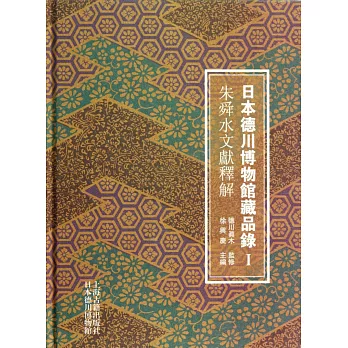"Bringing together leading specialists in the Chinese Buddhist canon, Spreading Buddha's Word in East Asia makes a major contribution to our understanding of both the textual and the social history of one of the most impressive textual projects in the history of the world." — John Kieschnick, Stanford University
"The Sinitic Buddhist canons rank among the largest bodies of sacred literature ever produced by any religious tradition. The compilation, editing, and publication of these massive collections required a commitment of money and manpower that was the medieval equivalent of the moon landings of the 1960s. This ground-breaking volume gives these canons the sustained attention they have long deserved from the scholarly community and will help to demonstrate that they are among the preeminent cultural achievements of the wider Sinitic world." — Robert E. Buswell, Jr., University of California, Los Angeles
"One measure of the maturity of a discipline is its critical awareness of its sources. This collection of nine expert and ground-breaking essays on the Chinese Buddhist canon, augmented by a magisterial preface by a doyen of the field and by two eminently useful bibliographical appendices, marks a genuine advance in the study of Chinese Buddhism. All students of Buddhism in China have necessarily been explorers and exploiters of the vast textual treasury of the Chinese Buddhist tradition, but they have not always been fully aware of the nature, the scope, the formation, and the limitations of great resource on which they draw. Now, with the appearance of this quite essential book, they have a reliable map and a guide to what is arguably the largest single collection of authoritative texts of any of the world's great religions. All who study Chinese Buddhism must be grateful to Professors Wu and Chia and their colleagues, and must keep this book of theirs ever handy as they pursue their research into scholarly territory now more clearly mapped." — Robert M. Gimello, The University of Notre Dame
Preface, by Lewis Lancaster
Acknowledgments
Conventions
Introduction, by Jiang Wu and Lucille Chia
Part I: Overview
1. The Chinese Buddhist Canon Through the Ages: Essential Categories and Critical Issues in the Study of a Textual Tradition, by Jiang Wu
2. From the "Cult of the Book" to the "Cult of the Canon": A Neglected Tradition in Chinese Buddhism, by Jiang Wu
Part II: The Formative Period
3. Notions and Visions of the Canon in Early Chinese Buddhism, by Stefano Zacchetti
4. Fei Changfang's Lidai sanbao ji and Its Role in the Formation of the Chinese Buddhist Canon, by Tanya Storch
Part III: The Advent of Printing
5. The Birth of the First Printed Canon: The Kaibao Edition and Its Impact, by Jiang Wu, Lucille Chia, and Chen Zhichao
6. The Life and Afterlife of Qisha Canon, by Lucille Chia
7. Managing the Dharma Treasure: Collation, Carving, Printing, and Distribution of the Canon in Late Imperial China, by Darui Long
Part IV: The Canon Beyond China
8. Better Than the Original: The Creation of Goryeo Canon and the Formation of Giyang Pulgyo, by Jiang Wu and Ron Dziwenka
9. Taisho Canon: Devotion, Scholarship, and Nationalism in the Creation of the Modern Buddhist Canon in Japan, by Greg Wilkinson
Appendix 1. A Brief Survey of the Printed Editions of the Chinese Buddhist Canon, by Li Fuhua and He Mei
Appendix 2. The Creation of the CBETA Electronic Tripitaka Collection in Taiwan, by Aming Tu
Bibliography
List of Contributors
Index
ABOUT THE AUTHOR
Jiang Wu is professor in the Department of East Asian Studies at the University of Arizona. His research interests include Chinese Buddhism, especially Chan/Zen Buddhism and the Chinese Buddhist canon, Sino-Japanese Buddhist exchanges, and the application of GIS tools in the study of Chinese culture and religion.
Lucille Chia is professor of history at the University of California at Riverside. Her research interests include Chinese book culture, most recently the history of Buddhist publishing in imperial China. She is the author of Printing for Profit: The Commercial Publishers of Jianyang, Song-Ming (960-1644) and coeditor of Knowledge and Text Production in an Age of Print: China, 900-1400.



























